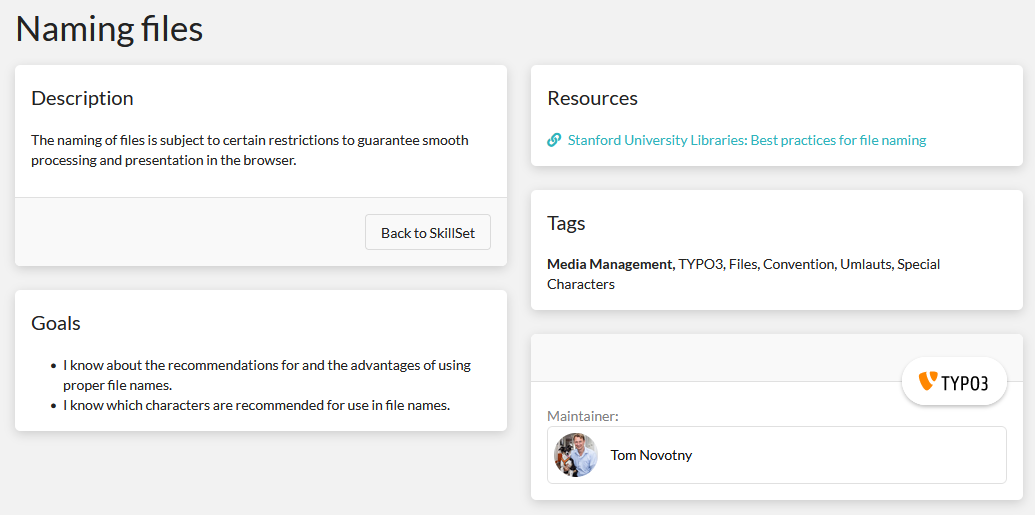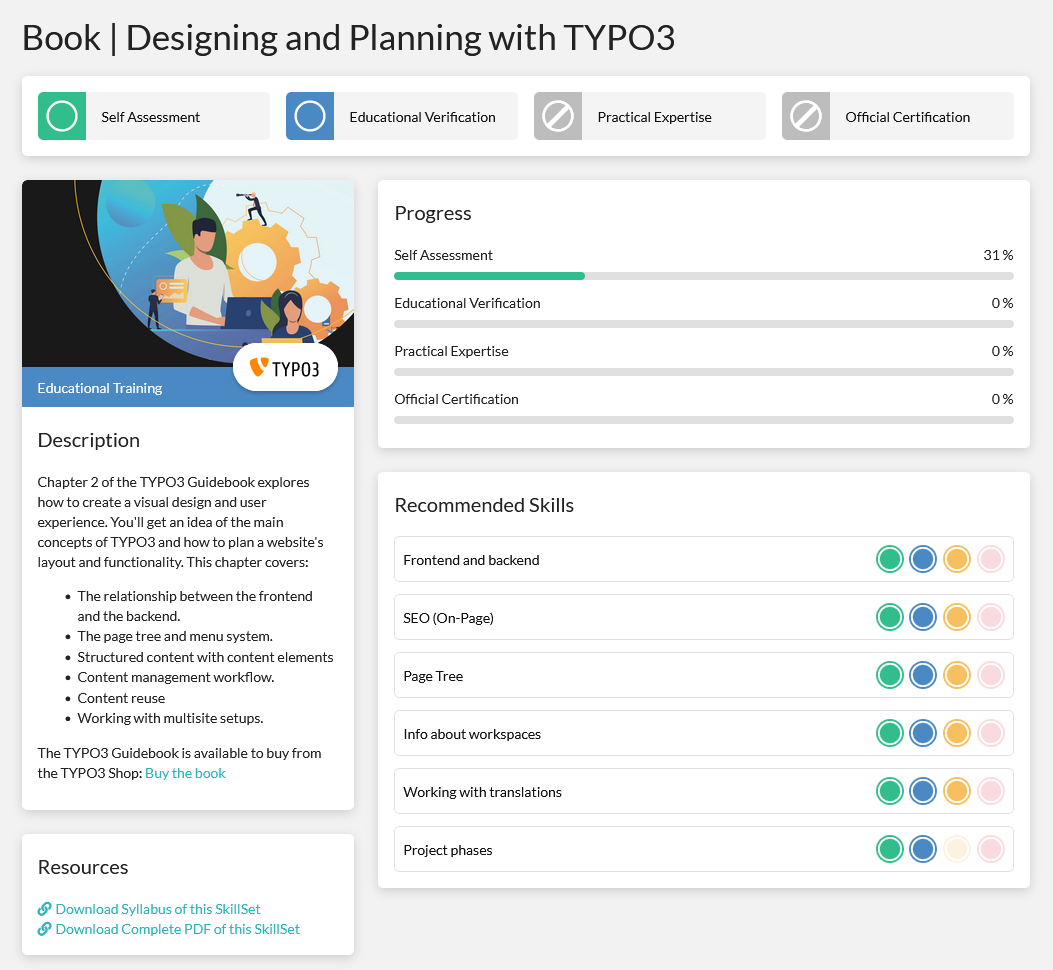
SkillDisplay - How to easily build sustainable customer trainings
Thanks to Florian Schmitt from SkillDisplay for sharing!
Managing and filling a new website with content on a regular basis may be an easy task for a slim Wordpress blog, but it is a whole different beast for a complex web portal - and thus requires an already existing experience with the technology being used, but also some training for at least the custom components of the website. Enabling a customer to do so is in and of itself a part of any larger project and always poses similar challenges.
Will there be anyone with sufficient education or even certification such as an Editor to lead content administration? What is the general level of competence of the people that will work with the website’s tools? How do I transfer knowledge in an effective and sustainable manner, especially with people without an IT background?

Defining the training topics
To create a syllabus for your training you will need to define the relevant skills you need to teach. The first step here should be to identify the entry level of competencies required that you will need to cover. While basic handling of a web browser may be assumed to be prevalent, uploading and cataloging images to the media library may not. Working from those basic skills up to the specifics of your project allows you to define skills with clear learning goals and directly connected learning materials and documentation on a step by step basis.

You might even add dependencies between skills (you need to already understand A to be able to learn skill B), to create a recommended order of learning/teaching.
While you can create your own skill definitions to suit your needs, TYPO3 already provided skill definitions for the TYPO3 CMS Certified Editor (Integrator and Developer too), that are freely accessible and ready to use for your syllabus - so you can concentrate on the skills specific to your project. You can find the ones for the TYPO3 CMS Editor here.
Next we will organize your skills into learning units, or SkillSets, to ease the learning and teaching process and also to boost reusability in future training. SkillSets usually cover a certain topic, e.g. user management, creating and administering news on a website, or how to create and edit pages.
Like skills, SkillSets can be enriched by learning material, allowing you to attach your documentations or even instruction videos as resources to each SkillSet as required. Thus by having skillsets ready you can create training simply by combining the SkillSets from your library as required for the current project and focus on the project's specifics.
Reuse and adaptation of SkillSets cuts short preparation time for training. They also create a persistent knowledge base for both you and your customers for both ongoing customer training and autonomous or internal learning.
To track obtained skills
Training is not only about preparing learning material, but also about teaching competencies and verifying transferred knowledge.
So by creating SkillSets you not only create structured training with a sustainable knowledge base, but now you can use SkillDisplay’s built-in verification system to track learning progress both within your training and whenever your customers work with your product on their own.
Your training SkillSets offer an always accessible knowledge base for your customers, that allows them to self-assess their skills and track which skills you verified to them during training workshops.
Using verification both during training and afterwards as a self assessment tool provides both you and your customer with precise information on who can operate which components of your product to what degree. Sustainable skill tracking like that not only helps to organize the initial enabling process, but also later during productive use whenever there are new colleagues that require enabling.
If you provide ongoing support for your product, you might want to know the general level of competence of the people that encounter problems. Having immediate access to attained verification of a requesting customer helps to assess the problem and how to inquire relevant information from the customer.
IT is a living matter
Sustainable skill management also requires being able to catch up with updates and development. Processes or UI/UX for certain components might change in time, and thus skills necessary to handle a website will as well. If you add skills to a skillset, or replace existing ones, information is immediately available to your colleagues and customers. You can update your documentation and learning hand-outs and attach them to the respective SkillSets, and thus keep your knowledge base up to date.
If another training is necessary, then it depends on the number and severity of changes. For example if a crucial SkillSet had changes to 3 of it’s 5 skills, you might want to get in touch with your customers and update them in a workshop. Whatever the situation is, you now have the tools for decision making for your customer training.
As an organization representative you can contact us to receive a trial organization account along with a quick product tour:
Comments
hi this is amazing

